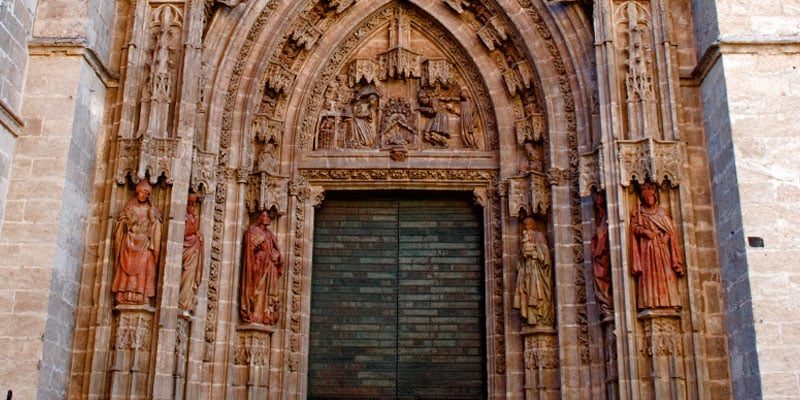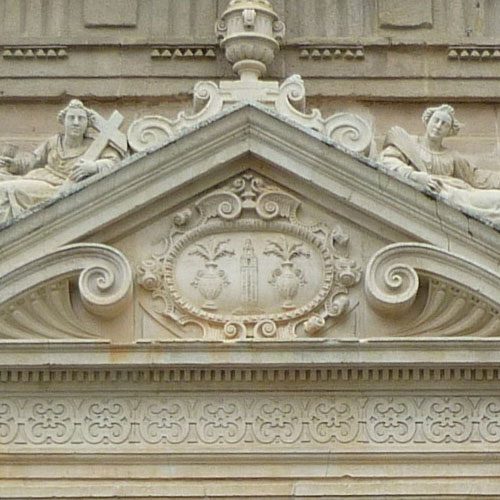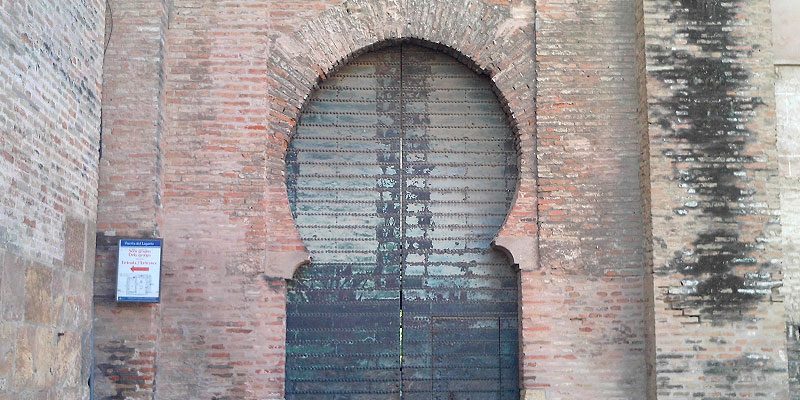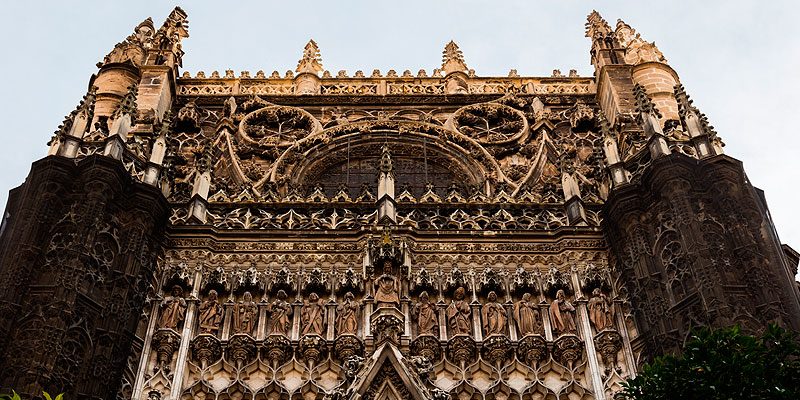Don't miss the Alcázar, the Cathedral and the Giralda of Seville!
Visit the magical corners in a spectacular tour with the best guides in the city
Official guide promotion:
62,60€ 54,46€ pax
(Final price INCLUDING TICKETS)

Visit the magical corners in a spectacular tour with the best guides in the city
Official guide promotion:
62,60€ 54,46€ pax
(Final price INCLUDING TICKETS)



Official guide
in English

Priority access
skip the line

Best price
guaranteed
Cancellation and
100% refund
Ten gates give access to this cathedral, however, there are three that do not correspond to the initial planning of the Cathedral: the Forgiveness Gate, which was the old entrance to the mosque; the Lizard Gate, which was an access to the Orange Trees Courtyard, and the Tabernacle Gate, which was the entrance to the Church of the same name. This means that the Gothic Cathedral was conceived with seven doors, a magical number that was not chosen at random, and that highlights the symbolism that surrounded medieval cathedrals.
It should also be noted that for the first time in history there are two doors flanking the head chapel, a distribution that will be copied in the Cathedral of Mexico City.
Starting with the west façade, the foot façade, which overlooks the Avenida de la Constitución, there are three portals: the Assumption Gate, the Baptism Gate and the Saint Michele Gate. There is a fourth door in this wing, but it belongs to the Tabernacle Church, not to the Cathedral. On the south façade, bordering Calle Fray Ceferino González, is the Prince Gate. On the east façade, the head, are three door, the Small Bells Gate and the Sticks Gate and Lizard Gate, which is accessed from Plaza Virgen de los Reyes. And on the north façade, parallel to Calle Alemanes, the Forgiveness Gate is located, and inside the Orange Trees Courtyard is the Conception Gate.



It is one of the two doors that are in the head, next to the Royal Chapel. Its name comes from the bells that called the workers who were building the Cathedral.
However, the Holy Entry into Jerusalem is represented on the tympanum, which would have to give it its name. Sculptures of prophets and angels also appear to complete the iconography of the door.





Visit its history, its doors, its altars and its works of art.
With our tour you will discover in detail one of the most beautiful places in the world.
The Cathedral of Seville was created as an architectural madness, being the largest Gothic Cathedral in the world. Going through its interior, with our tours, is a real stimulus for the senses of any visitor.
Our tours will show the wealth of paintings, sculptures, stained glass windows, forging, goldsmithing, clothing, books, etc., that make Seville Cathedral one of the great museums in Europe and a historical-artistic compendium of Catholicism.
Discover the history of the Cathedral of Seville through the centuries and the different historical periods through which it has passed, from the Almohad to the present.
Choose the days and indicate the attendees
Discover the Royal Alcazar of Seville



Go up and discover the sky of the city of Seville


